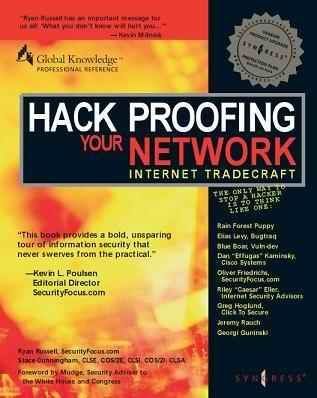
Description:
Author(s): Kevin L. Poulsen,
Publisher: Syngress
Year: 2000
ISBN: 1-928994-15-6
Language: English
File type: PDF
Pages: 494
Size (for download): 2.49 MB
This is a book about hacking. It’s not a novel about a set of elusive cyberpunks, it’s a do-it-yourself manual. Are we trying to tell you how to break into other people’s systems? No, we’re trying to help you make your own systems more secure by breaking into them yourself. Yes, this has the side effect that you might learn how to break into someone else’s system as well, and therein lies much of the controversy surrounding hacking.
Who Should Read This Book?
You should read this book if you work in the information security field, or have an interest in that field. You should have a pretty good idea of how to use a computer, and ideally have some experience installing an operating system, and various application programs. You should be an Internet user. The material is aimed at mid to advanced level, but we do our best to provide some of the basics for beginners. If you’re a beginning information security student, you may struggle a bit with some of the material, but it is all understandable if you spend the effort. There are some beginner techniques taught, such as diffing, which will serve the learner through all levels of skill.
What Will This Book Teach You?
We want to teach you the skills and rules that are used by hackers to review systems for security holes. To this end, we’ve assembled some of the world’s best hackers to instruct you on topics they have expertise in. You’ll learn about cracking simple encoding schemes, how to write buffer overflows, how to use packet sniffing utilities, and how to feed carefully crafted data to both clients and servers to defeat security mechanisms. This book will teach you the role of the attacker in the battle for securing your systems.
TABLE OF CONTENT:
Chapter 01 - Politics
Chapter 02 - Laws of Security
Chapter 03 - Classes of Attack
Chapter 04 - Methodology
Chapter 05 - Diffing
Chapter 06 - Cryptography
Chapter 07 - Unexpected Input
Chapter 08 - Buffer Overflow
Chapter 09 - Sniffing
Chapter 10 - Session Hijacking
Chapter 11 - Spoofing: Attacks on Trusted Identity
Chapter 12 - Server Holes
Chapter 13 - Client Holes
Chapter 14 - Viruses, Trojan Horses, and Worms
Chapter 15 - Reporting Security Problems
DOWNLOAD NOW
Password:
www.warezfreak.org



No comments:
Post a Comment